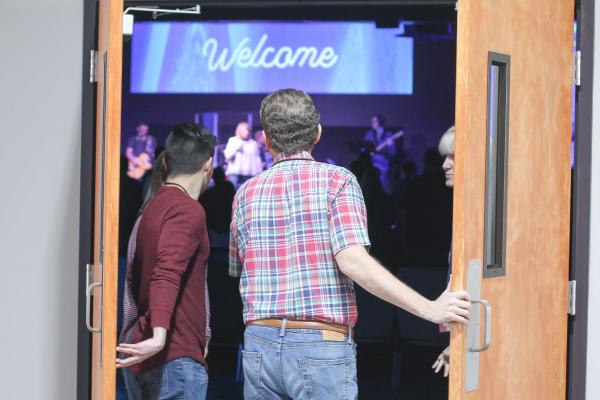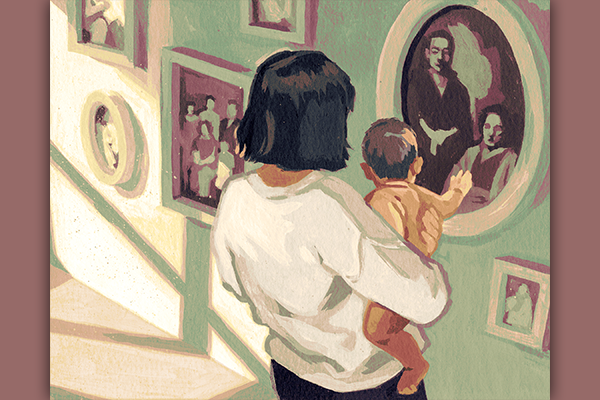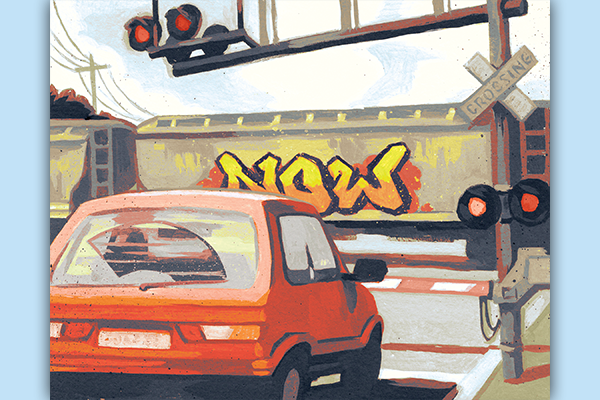In July, Ryan Burge, an associate professor of political science at Eastern Illinois University and an ordained minister in the American Baptist Church, made a case on his Substack that, with the exception of the rise of those who identify as non-religious or “nones,” the most important trend in American religiosity is the rise of nondenominational churches. For those who are actively engaged in denominational life, the numbers are staggering.
When taken together, those attending nondenominational churches now make up the second largest religious group in the United States after Roman Catholics. Rising from a mere 5 percent of the U.S. religious landscape in 1984, nondenominational adherents are now estimated to represent an astonishing 22 percent. Placing this in context, Burge argues that there are more nondenominational Christians in the United States than there are Latter Day Saints, Muslims, Evangelical Lutheran Church of America members, Lutheran Church Missouri Synod members, Assemblies of God members, Jehovah’s Witnesses, National Missionary Baptists, Episcopalians, and National Baptist Convention members all combined.
Burge’s research forces us to wrestle with what might come next, even as those same denominational structures continue to play a role in the future. I currently serve an American Baptist congregation in Evanston, Ill. and have been actively involved in denominational life — to the extent that Baptists can be said to have a denomination. Over the last decade, I have come to believe that denominations are not the best way to organize our religious communities. With that in mind, I have sought to foster connections across denominational and religious divides. That means I have spent much time considering this question: What do we do when our denominations start to die?
1. Focus more on the local church
Local churches have their own set of issues like declining attendance, volunteer burnout, and an uncertain future. But congregations can continue to play important roles in their communities by serving as a “third place” and advocating for justice in their communities or hosting nonprofits in their buildings. The decline of denominations will mean that the work of the local church is more important than ever. While a retreat from the goal of national or global impact through denominational engagement might seem like a diminishment, it will also free up time and resources to pursue change in ways that only congregations can. For instance, my church has recently partnered with a homeless shelter and an interfaith organization to open more permanent shelter beds in our church.
2. Form networks of support beyond those in the same denomination
Focusing on local networks instead of national networks could push churches to form partnerships and pursue work across religious traditions. By focusing on the local, congregations can experience rich ecumenical and interfaith relationships based on common sense of purpose rather than theological unity. In my congregation, we worship with a local Episcopal church and in May, we hosted a workshop together on ending homelessness at a time when our city was experiencing much consternation about converting a hotel into a homeless shelter. That relationship continues to be strong and we look forward to future collaborations. Those relationships will surely yield additional theological insights where we develop “holy envy” for one another’s strengths while preserving our own unique commitments.
3. Redirect the panic that many will feel
As denominations continue to experience decline, there is one response that will be familiar to anyone in the local church: anxiety. In times of great change, anxiety tends to increase and, without a doubt, we live in an anxious age. It is appropriate to mourn what the loss of robust denominations might mean for churches — less collaboration on mission, less oversight over ordinations, less opportunities for clergy and laity to gather together and meet their counterparts, less importance given to denominational statements on social justice issues, etc.
Acknowledging anxiety is key, but allowing it to give way to panic is a mistake. Many people will undoubtedly feel panicked as the denominational landscape continues to change. Panic keeps local churches from living out what God has called them to do in their communities. What people need now is non-anxious presence and room to share grief. For those feeling anxiety, we need to encourage those who are feeling anxiety about denominational decline to think about what might come next in their tradition’s future.
4. Emphasize lay leadership and the gifts that members bring to their congregations
Denominations play a key role in ordaining clergy to serve in local churches but with the imminent demise of denominations, churches will need to utilize the gifts that are already present in their congregations. While the 20th century saw the professionalization of clergy, the 21st century might see a return to previous modes of leadership that placed more of an emphasis on nurturing the gifts of the worshiping community.
With the decline of available clergy, lay leaders are already being asked to do more — especially in more rural areas. The collapse of denominations means that this shift is likely to be permanent. Congregations can start preparing for this shift now by encouraging their parishioners to do activities commonly thought of as pastoral. Consider encouraging lay preaching or the start of a Stephen Ministries program that will equip laypeople to provide pastoral care.
5. Prepare local churches to help with pastoral placement and conflict management
One of the most important ways that denominations impact local churches is through their management of pastors who are assigned or called to their congregation. Each denomination differs on how they manage this process: Some appoint clergy outright and others allow the process to be driven by the congregation; denominations often play an important role in the process by vetting candidates and working with churches to find the best fit for their community.
As denominations continue to decline, churches will need to be prepared to find and vet their own leaders, including those within their congregations. Individual churches will have to establish an extensive interview process that assesses the fit, character, and ability of the pastoral candidate.
6. Resist the temptation to do more
Organizations in their final stages of life often increase their activity, offering a volley of initiatives aimed at increasing engagement. For example, as a denominational organization that I am a part of started to lose members over the span of three years, it rewrote its bylaws and instituted more onerous requirements for active membership. The same is likely to be true of denominations as they can sometimes look at congregants as a pool of free labor. Resisting the urge to attempt to save the denomination means more time is available for the local church to consider the future and plan for its flourishing after denominations are no more.
Denominations may figure out ways to adapt to the present reality, but such a transformation would mean that they no longer resemble the denominations we are familiar with. We have become accustomed to a church that creates a high burden for volunteers and is dependent on highly trained clergy, but that does not have to be our future. We can embrace the ethos of C. Christopher Smith and John Pattison’s “Slow Church” movement, which offers a different way of doing community that resists speed and commodification, while at the same time offering a pace for spiritual discovery.
***
The collapse of denominationalism offers not just difficulties but real opportunities for local congregations to flourish. Certainly, they will need to be nimbler and more self-reliant, but new networks of support and learning can be crafted from the ashes of the old. Perhaps most importantly, denominationalism’s end will place churches’ focus on the place where it can have the most impact — its local community.
The death of your denomination, whether it comes quickly or slowly, is certainly a possibility. The question is what you and your church are doing to prepare for that possibility. Death — whether in humans or institutions — is never easy, but our tradition promises us that what lies on the other side of that death is a chance at resurrection. That resurrection hope is what makes me optimistic about the future of the church, even as it faces strong headwinds. What comes after denominations is up to us.
Got something to say about what you're reading? We value your feedback!






